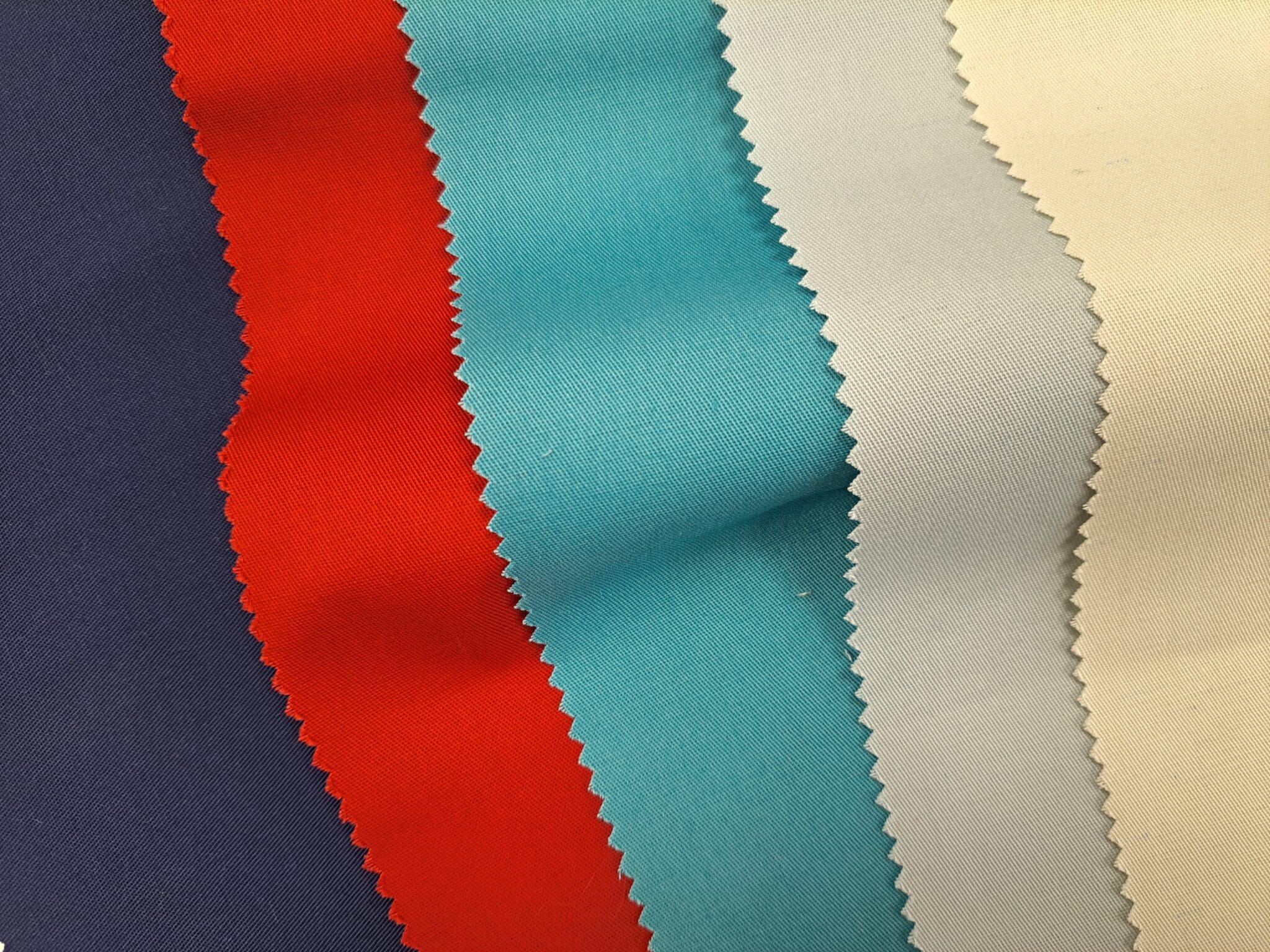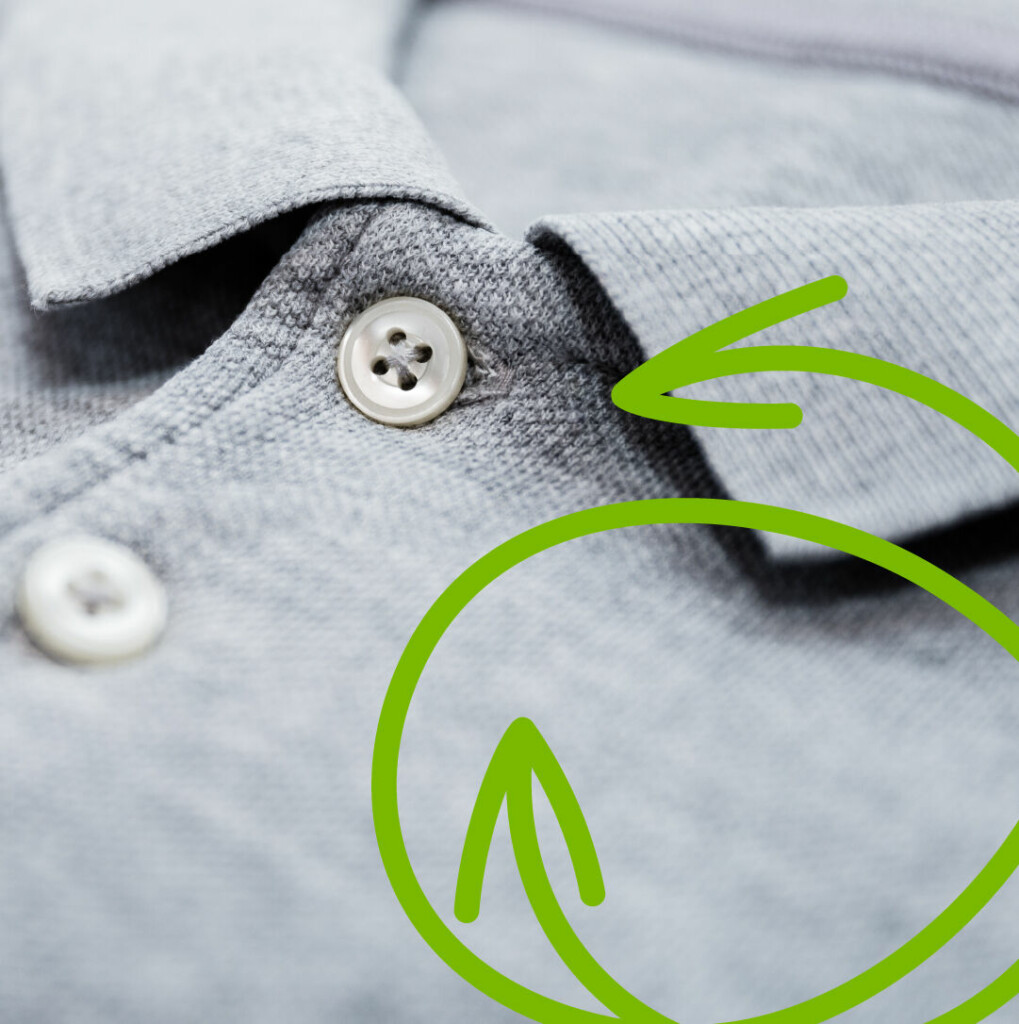
From old textiles to pioneering new fabric
We are proud to introduce our new fabric crafted from recycled fibres from our end-of-life textiles. It marks a significant step in workwear fabric innovation. The fabric has been thoroughly tested in the lab, through industrial washing trials, and by real users to ensure it meets the highest quality and durability standards. It represents the first commercial result of our collaboration with the recycling company Rester and the fabric manufacturer Klopman.
Reduce virgin fibre dependence
The development of this fabric began in 2021 with the goal of creating large-scale, practical applications for recycled fibres from discarded textiles. By reducing the reliance on virgin fibres, we aim to address the significant environmental impact of fibre production, which consumes vast amounts of land, energy, and water.
In 2020, the textile sector was the third-largest contributor to global land and water degradation. Yet, only 1% of discarded textiles are recycled into new garments today. This fabric represents a small but important step toward changing that and adopting more recycled materials.
Prioritising quality and durability
We have previously mainly incorporated recycled polyester into our products, which is a relatively safe choice since it performs similarly to virgin polyester in terms of durability and quality. However, the new fabric takes innovation further by including 10% recycled post-consumer polyester-cotton fibres—a novel solution in workwear fabric production. As most of our garments are made of polyester-cotton blends, there is a constant flow of raw materials for fabric production.
According to Material Manager Seija Forss, this is just a starting point to ensure high quality and gather valuable insights: “Quality is our number one priority. Our fabrics must withstand heavy use in professional environments. Our workwear is typically worn for at least three years and in some industries, even up to seven years, equating to hundreds of uses. This far exceeds the lifespan of many consumer products, which may be discarded after just one or two wears.”
Scaling the impact
This fabric is produced in Europe, close to our customers, reducing transportation distances and associated emissions. Forss is confident that the new fabric offers significant value to customers who aspire to lead in sustainable development.
“Our business model is based on circular economy aiming to extend the lifespan of textiles and produce new ones only, when necessary, thereby conserving natural resources,” Forss explains. “This new fabric represents a significant step forward in closing the loop, making even better use of the resources we already have.”
Forss envisions the broader benefits of scaling its impact: “As more businesses adopt this fabric, we will achieve greater efficiency in large-scale production and multiply its positive environmental impacts.”
With just 10% recycled content, adopting this kind of fabric with recycled content across all our workwear purchases could make a substantial environmental impact – reducing our greenhouse gas emissions by over 330 tons and saving 72 million litres of water. To put this into perspective, this reduction is comparable to the annual carbon absorption of approximately 132,000 trees and the yearly drinking water needs of nearly 100,000 individuals.
Driving change
The first products made with this new fabric will debut in early 2025 as part of our CarePro collection, designed for healthcare, retail, and facility management professionals. This marks another step forward in a broader initiative to ensure that 30% of our new textiles include recycled or biobased fibres by 2025.
We have already introduced recycled fibres in several products. For example, our HoReCa collection features recycled fibres derived from our old textiles, while our standard mats are made with 75% recycled fibres, and our design mats include 100% recycled fibres.
Our work is aligned with the European Union’s Sustainable and Circular Textiles Strategy, which emphasises that all textile products should be durable, repairable, and recyclable, and largely made of recycled fibres. The Ecodesign for Sustainable Products Regulation sets minimum requirements for recycled fibres in new textiles, accelerating progress across the industry.
As Forss concludes: “We are proud to be at the forefront of this transformation. These developments enhance our circular practices and inspire the entire sector to innovate and reduce reliance on virgin materials.”





